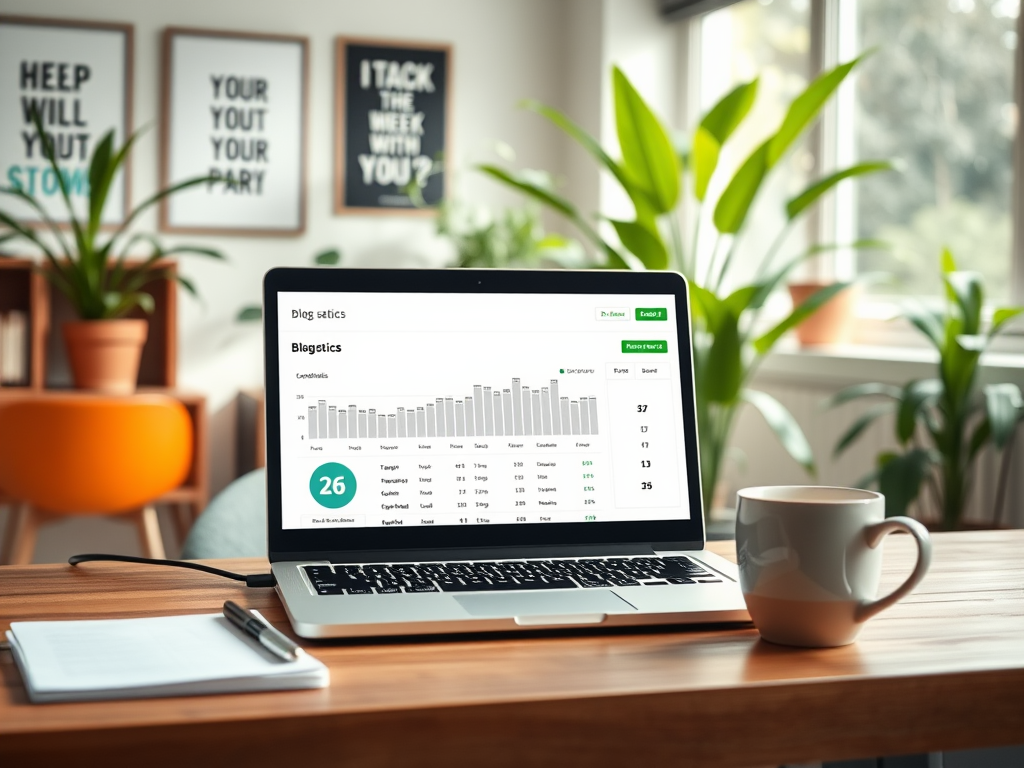How to Build a High-Traffic Blog
Blogging has become more than just a hobby; it is a powerful vehicle for establishing authority, sharing knowledge, and generating income. With the right strategies in place, a blog can attract thousands of visitors, turning it into a sustainable platform that resonates with readers. However, crafting a blog that garners high traffic requires more than a few well-placed posts. It demands a clear understanding of your audience, a commitment to quality content, and robust promotional strategies. In this article, we will take an in-depth look at how to build a blog that not only attracts visitors but keeps them coming back for more.
One of the early stumbling blocks for many bloggers is the failure to grasp who their audience truly is. Understanding your readers is not just a nice-to-have; it’s vital for tailoring your content and ensuring it resonates with their interests. To successfully engage your audience, you will need to gather insights through various research methods. This might include analyzing search trends and social media interactions. Ultimately, the more you know about your audience, the better equipped you’ll be to meet their needs and expectations.
Understanding Your Audience

The core of any successful blogging strategy lies in a comprehensive understanding of your target audience. Knowing their preferences, struggles, and desires allows you to create content that addresses their specific needs. Tools such as Google Analytics and social media insights can provide valuable data. Surveys and user feedback are also fantastic resources to gather insights. Below are some effective methods for conducting audience research:
- Utilize online survey tools to ask your audience targeted questions.
- Monitor trends using keyword research tools like SEMrush or Ahrefs.
- Engage with followers on social media to understand their questions.
Creating audience personas is a proven way to crystallize your understanding of who you’re writing for. These fictional representations of your ideal readers can guide your content strategy effectively. By collecting demographic information and behavioral data, you can build a rounded persona. What are their age, profession, and interests? What problems do they seek solutions for? Once you outline these personas, they can direct your content topics, tone, and style.
Choosing the Right Niche

Another pivotal step in building a high-traffic blog is to select a niche that you are both passionate about and that has the potential for profitability. The intersection of personal interest and market demand is where you will find lasting satisfaction and success. Brainstorming niche ideas involves reflecting on hobbies, professional expertise, and the kinds of content you enjoy reading. It’s equally important to validate these ideas through market research.
Understanding who your competitors are and what they’re doing can provide valuable insights. Tools like BuzzSumo, Social Blade, and Google Trends can help you analyze your competition effectively. Look at factors such as content quality, reader engagement, and traffic statistics. Below is a brief overview of what to focus on when analyzing competitors:
- Assess the quality and frequency of their posts.
- Evaluate engagement metrics across their platforms.
- Identify gaps in their content that you can fill.
| Competitor | Content Quality | Engagement Rate |
|---|---|---|
| Blog A | High | 5% |
| Blog B | Moderate | 7% |
| Blog C | High | 10% |
Crafting Quality Content
At the heart of attracting traffic lies quality content. High-caliber posts not only grab the attention of your audience but also keep them engaged. Diverse content types should be part of your strategy, including articles, videos, and visually engaging infographics. Each format can serve a different purpose and resonate with different segments of your audience. The content creation process should prioritize originality and relevance while maintaining a consistent posting schedule.
Every successful blog post should include essential elements to optimize readability and engagement. Pay attention to crafting catchy titles that draw readers in, break text into digestible paragraphs, and include subheadings for better flow. Visuals should complement your text, making points clearer and breaking up chunks of text. Additionally, don’t hesitate to include internal and external links that enhance the reader’s journey.
Implementing SEO Best Practices
Search Engine Optimization (SEO) is your ticket to drawing organic traffic. By implementing on-page and off-page SEO techniques, you ensure that search engines recognize and rank your blog effectively. This includes optimizing keywords and meta tags, as well as engaging in link-building strategies. Below is a list of key factors to focus on when working on your blog’s SEO:
- Conduct regular keyword research to find terms your audience is searching for.
- Optimize images with proper alt texts and file names.
- Ensure your blog is mobile-friendly and has fast loading times.
Your blog’s URL structure plays a critical role in its SEO performance. URLs should be easy to read and share, so aim for a structure that reflects the content accurately. Clean URLs improve the user experience and signal to search engines what your content is about. Adopting best practices will help increase your blog’s visibility and user interaction.
Promoting Your Blog
Once your blog is ready, effective promotion is essential for driving traffic. Relying solely on organic traffic isn’t enough; you must be proactive in leveraging various strategies. From social media sharing and Email marketing to engaging within your niche community, every action counts. Collaborating with other experienced bloggers can help extend your reach and introduce your content to new audiences.
Social media platforms are invaluable tools for promoting blog content. Each platform has its own unique audience and set of best practices. Share snippets of your articles, engage in conversations with followers, and utilize relevant hashtags to grow your reach. By fostering a community around your content, you create loyal readers who come back for more.
Analyzing Traffic and Performance
No strategy is complete without regularly analyzing your blog’s performance. Utilize tools like Google Analytics to monitor traffic sources, bounce rates, and user behavior. Understanding these metrics will clarify which strategies are effective and which need adjustment. Tracking performance allows you to adapt habits to maintain or enhance traffic flow. A/B testing can be employed across various elements, such as headlines or call-to-action buttons, to determine the most effective versions.
A/B testing is a crucial technique for optimizing your blog. By comparing two versions of content or layouts, you can see which one performs better in terms of engagement and conversion. Adjustments based on testing results can lead to significant improvements in traffic over time. Embrace this process as an ongoing strategy for your blog, refining elements until you discover what captivates your audience.
Conclusion
Building a high-traffic blog is not an overnight success; it evolves through careful planning, understanding, and execution of key strategies. From identifying your audience to promoting your content effectively, every step is essential for cultivating a successful blog. Commit to quality and consistency, and continuously analyze your efforts for optimization. The journey may be long, but the rewards—loyal readership, influence, and potential income—are undeniably worth it.
Frequently Asked Questions
- What is the best way to promote my blog? Utilize social media, email newsletters, and collaborations with other bloggers.
- How often should I publish new content? Consistency is key; aim for at least one post per week to maintain audience engagement.
- What should I do if my blog doesn’t get traffic initially? Review your SEO strategies, promote on social media, and engage with your audience to drive traffic.
- Do I need to invest money to build a high-traffic blog? While it’s possible to build a blog for free, investing in premium hosting and tools can enhance your blog’s performance and reach.
- Is it necessary to use social media to drive traffic? While not essential, social media is a powerful tool for reaching a wider audience and driving traffic to your blog.
